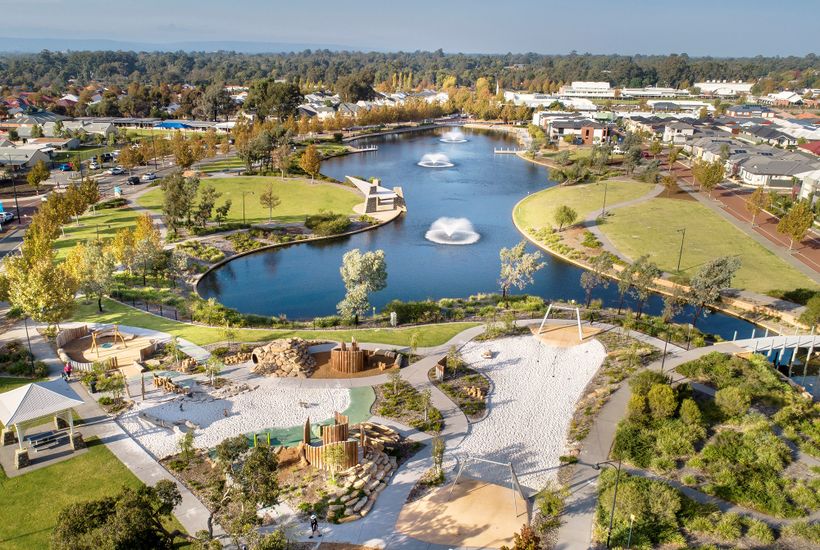Stockland predicts land under-supply in growth corridors in 2025

The housing market could shift into under-supply in growth corridors around major cities in coming years, according to the country’s largest residential developer, Stockland.
Delivering his final result as chief executive, Mark Steinert said the first half had demonstrated the importance of getting policy right as the market takes off.
“We think the market will certainly be strong in land, but in fact looking to 2025 we’re going to get to quite a chronic under-supply in growth corridors in the land market,” he said.
“We need to make sure that, particularly on the eastern seaboard, planning and the delivery of infrastructure can align to ensure that under-supply doesn’t become too great,” he said.
“That’s going to reignite the whole challenge around affordability again just when it got to a point where that could actually be addressed.”
Stockland pointed to the broad recovery that was taking flight in the wake of initial stimulus measures.
“The strongest market at the moment is Sydney, followed by southeast Queensland, which is reflecting its under-supply, and Melbourne continues to be solid, but has obviously been a bit more impacted by both the combination of the lockdowns, and the greater availability of land,” Mr Steinert said.
Perth could moderate over the next 12 months as WA had the largest housing grants, pulling forward demand, although the strong mining sector could keep momentum going, he said.
His early call of a V-shaped recovery from the crisis appears to be being borne out, with Mr Steinert saying the economy was running on the “optimistic scenario” proposed by the Reserve Bank and Treasury last year, reflecting jobs and wages growth and a lift in consumer sentiment and manufacturing.

A Stockland residential community. Picture: realestate.com.au/buy
The housing market is also benefiting from the presence of more than 250,000 returned Australians who have stayed, providing inflows equating more than a year of skilled migration.
“We’ll move to equilibrium in 2022, and then move back into quite a significant under-supply as migration and foreign student numbers start to pick up in 2022,” Mr Steinert predicted.
Stockland is riding the comeback and delivered a rise in Funds From Operations to $386 million in the first half. Profit dipped to $350 million but it has come through the crisis well positioned as its land estates attract first-home buyers.
The residential business had its strongest half in four years with more than 3800 sales as it produced more lots and brought forward stages in its estates. Residential settlements jumped 43.7% to 3,101.
Stockland had more than 4800 contracts on hand at the end of January and is on track to get more than 6000 settlements this financial year.
Sales activity was strong with 3835 deposits, 53% higher than in the December 2019 half, and January sales were strong.
Mr Steinert is leaving incoming chief executive Tarun Gupta, who starts in June, with a broader company than he inherited as it has sought to boost its position in offices and industrial, while keeping a focus on housing.
Stockland re-established guidance and is targeting a second half FFO per security range of 16.3 cents to 16.9 cents, resulting in a full year FFO per security of between 32.5 cents and 33.1 cents.
The distribution for the full year is expected to be within the target payout ratio of 75% to 85% of FFO, albeit at the lower end of the range.
“Despite the continued impact of COVID-19, our [first half] operating profit has exceeded that of the prior corresponding period, a period not impacted by the global pandemic,” Mr Steinert said.
FFO per security edged up by 0.6% to 16.2 cents. The $350 million profit included a $157 million lift from industrial property rising and a clip from retail properties falling in value by 1.7%.
Shopping centres were hit by the crisis and FFO fell 9.9% to $185 million. Stockland called out the “significant improvement” in market conditions, including a return to near pre-pandemic store opening and foot traffic levels, but noted some rental income, from a small number of retail smaller tenants, remains under pressure.

Stockland’s shopping centres were impacted by the health crisis. Picture: realcommercial.com.au/lease
The company sold $402 million of smaller centres and has been pumping proceeds into its $5.9 billion office and industrial project pipeline.
Last December a capital partnership was set up with JP Morgan Asset Management to invest in more than $1 billion of logistics assets on the eastern seaboard over the next three years.
Stockland has been buying more sites to capitalise on logistics demand and also has major office projects in North Sydney and the CBD planned.
This article first appeared on www.theaustralian.com.au/business/property.







